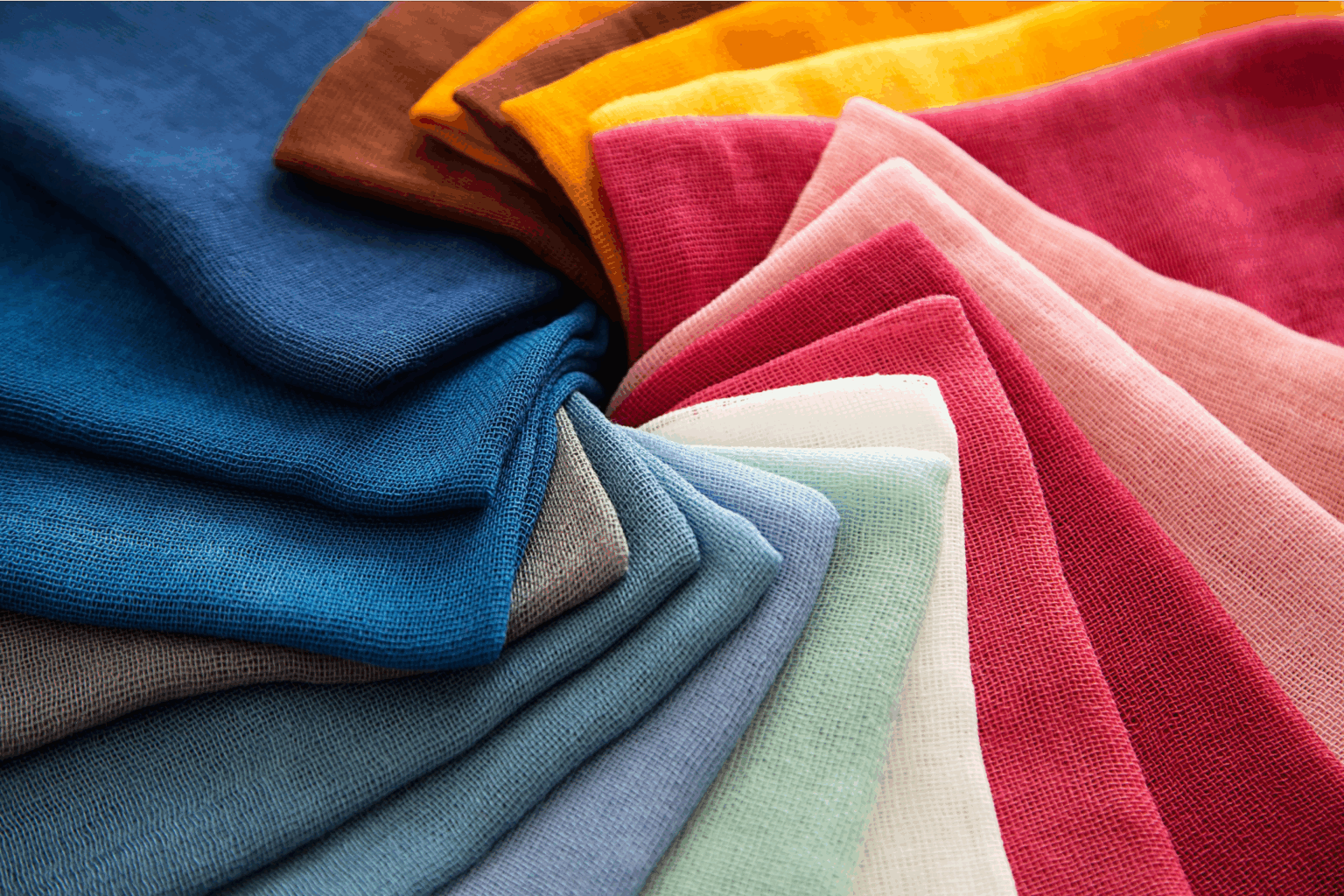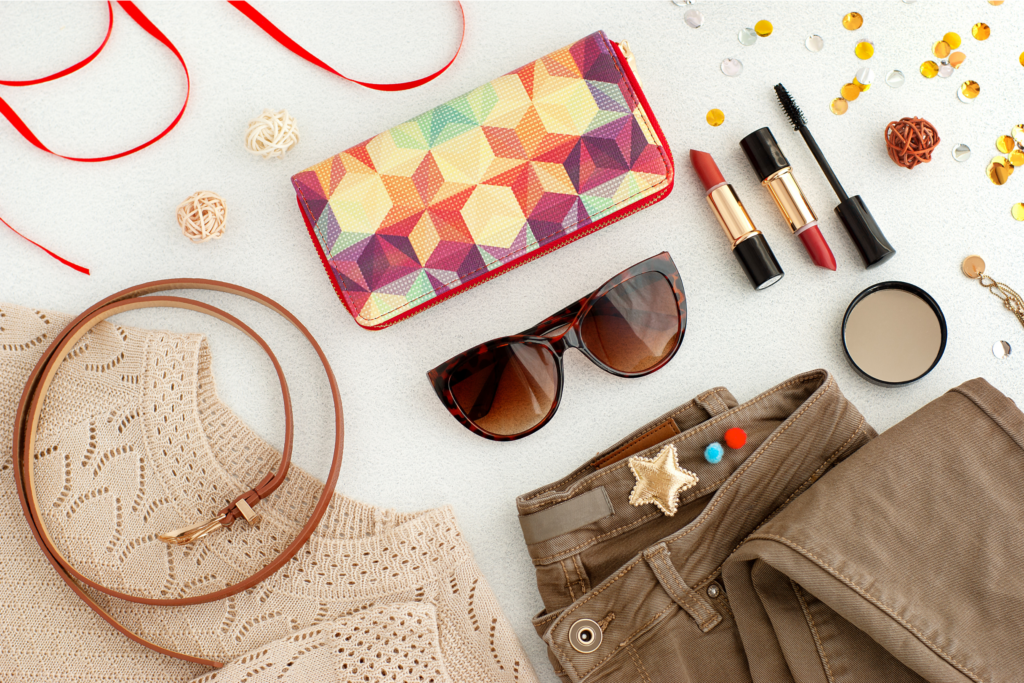Create a custom shirt with Printify
We know it can be a bit tricky to choose the best fabric for shirts. With many t-shirt fabric options ranging from natural fibers like cotton, silk, and linen to synthetics like polyester, nylon, and spandex, you may know where to start when choosing a shirt for your online store. But don’t worry – we’re here to help.
This t-shirt fabric guide covers the different shirt materials used in Print on Demand, from the go-to options to less common shirt material types and their advantages and disadvantages, to help you find the perfect shirt for your designs and customers.
This post may contain affiliate links, which means we may earn a commission if you make a purchase through those links. This comes at no additional cost to you.
Key takeaways
- Natural fibers, like cotton and linen, offer breathability and comfort, while synthetic materials like polyester and spandex are known for their durability.
- Blended fabrics, such as cotton-polyester or cotton-spandex, combine natural and synthetic fibers to improve durability, stretch, and comfort.
- Your design type, price range, softness level, and desired durability all play key roles in which shirt fabrics you choose.
- Cotton is typically the best material for t-shirts with vibrant, long-lasting DTG or DTF prints, while synthetic fabrics like polyester are always used for dye-sublimation.
How to pick the right t-shirt fabric
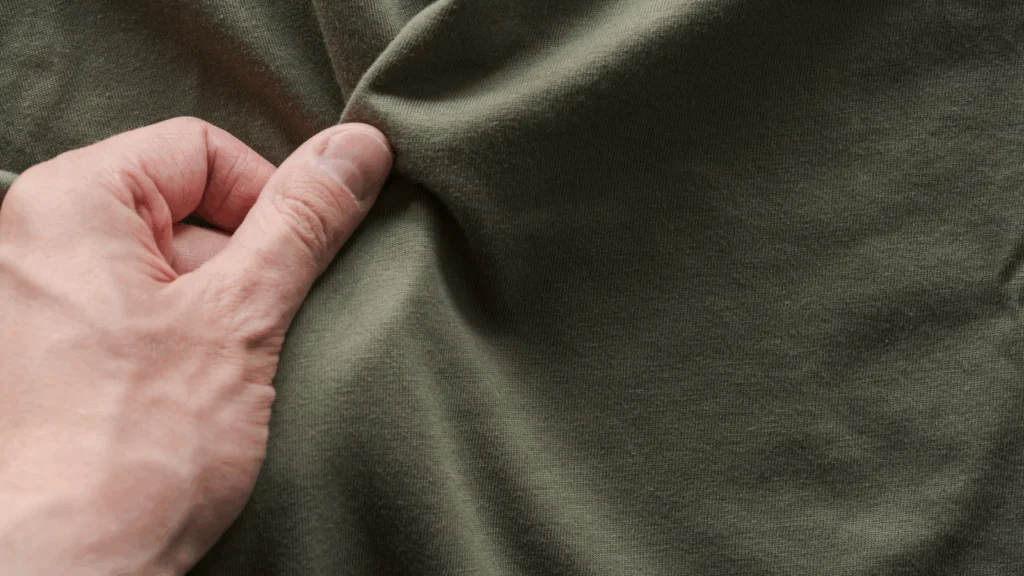
Fabric plays a significant role in how a t-shirt feels, how long it will last, and whether it has a good printing surface. So, what are shirts made out of? Let’s look at the most common types of fabrics for t-shirts.
The most common types of shirt fabric
The most common fabric options are cotton and polyester or a blend.
Cotton is a natural, comfortable, and soft material that stays cool in the summer. It’s great for direct-to-film (DTF) and direct-to-garment (DTG) prints and is the top choice for eco-conscious customers. On the downside, it tends to wrinkle more easily than synthetic materials.
Polyester is a synthetic, durable fabric that dries quickly, making it well-suited for activewear. It’s the go-to for sublimation printing, creating vibrant, long-lasting designs. However, it’s less breathable than cotton.
Polyester blends combine polyester with natural fibers like cotton. They’re softer than polyester alone and more wrinkle-resistant than natural cotton. This combo also works for sublimation printing.
Fabric weight
Fabric weight refers to how heavy or thick a fabric feels, typically measured in grams per square meter (GSM) or ounces per square yard (oz/yd²).
A higher fabric weight usually means the material is thicker, more durable, and often more structured. Lighter fabrics tend to be softer, more breathable, and drape more easily, making them ideal for warm-weather wear. Medium weight offers a nice combo of light and heavy weight benefits.
Let’s see how the three stack up against each other:
- Lightweight t-shirts are usually super soft and have the ultimate relaxed fit. They’re thinner, lighter, and more flexible, but may also be a bit transparent.
- Medium-weight t-shirts are not as thin but are also very soft and have a casual fit. This weight offers better protection and warmth, but will take longer to dry.
- Heavyweight t-shirts are more structured, but depending on the fabric composition, they may feel a little stiff. They’re ideal for durable workwear and are best suited for cooler weather.
Thread count
Thread count – or ply – defines the fineness of the thread and tells you how many strands of yarn are twisted together.
The higher the number, the finer the yarn, which means the fabric is softer, smoother, and lighter. If the yarn count is low, the fabric is generally weightier, thicker, and can feel coarser.
Thread count information is in the product details, where it may be displayed in several ways: 30/1, 30s, or 30 singles.
Choosing the best for your customers
There are a handful of key factors to consider when choosing the best fabric for your t-shirts. Knowing your customer base, their preferences, and the settings in which they’ll wear the shirts makes the decision much easier.
Here are the main things to consider:
- Weather. What temperatures will your customers be wearing their shirts in? Will they want a shirt that offers breathability in summer or warmth in winter?
- Comfort. How much do your customers value softness? Do they want a more flowy fit or something a bit stiffer with more structure?
- Durability. Choose a garment that fits your customers’ intended purpose, whether that’s casual wear, exercise, or a special-occasion piece.
- Cost. What is your budget, and how much are your customers willing to pay? Specialty and organically-grown fabrics will cost more, while synthetics and standard cotton will be cheaper.
Polyester: Pros and cons
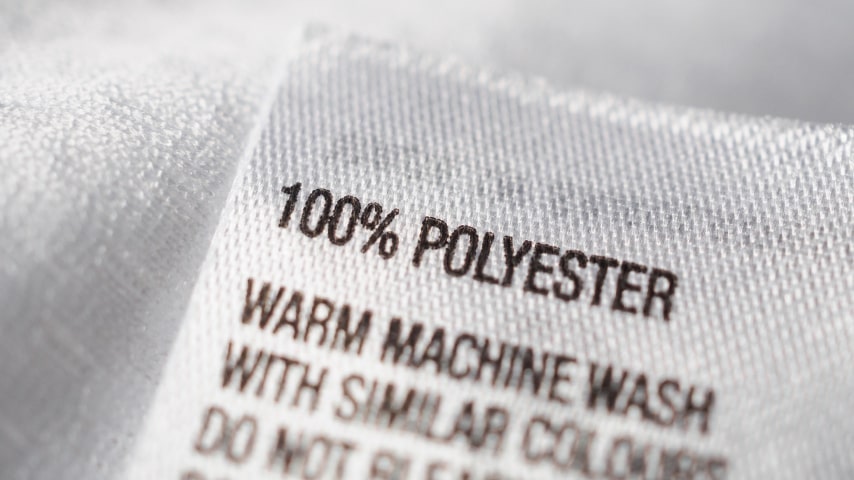
Polyester t-shirts are made from a petroleum-based synthetic material. It’s the most popular and versatile synthetic fabric for clothing.
Polyester is a durable, low-maintenance material that can withstand stretching, creasing, and everyday wear and tear. It’s also affordable, making it a good choice for custom t-shirts and athletic apparel. Polyester fabric dries quickly, doesn’t need careful washing, and holds printed designs very well.
Polyester fabric also has some downsides. The texture can vary, from feeling like soft cotton to being quite coarse. It’s typically non-biodegradable and takes many years to break down. Manufacturing produces chemical waste if reduction measures aren’t put in place.
Check out some of our most popular polyester shirts:
Create your own merchandise and start selling today!
Cotton
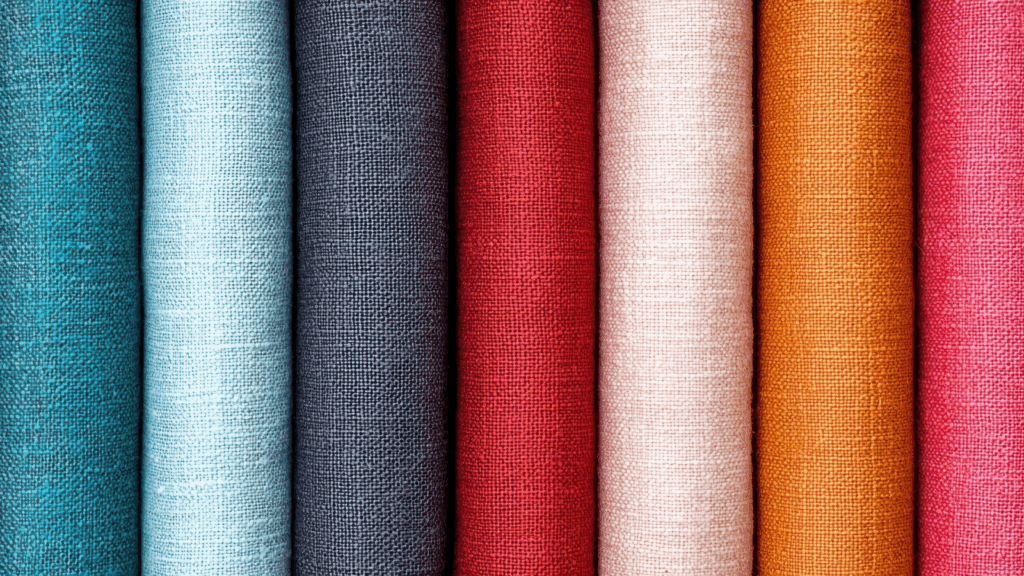
Cotton fabric is the most widely used natural fabric in the world. Cotton is often considered the best material for t-shirts and everyday clothing items.
It’s comfortable yet durable, suitable for hot weather due to its breathability.
Cotton is often the best choice for most print-on-demand products. The ink bonds with the fibers, providing a fantastic canvas for colorful, detailed designs.
Types of cotton
Let’s look at the different types of cotton commonly used for t-shirts.
- Ring-spun cotton. While more expensive than regular cotton, it’s a bit softer, smoother, and more durable because it’s a tightly woven fabric and the spinning process twists several threads together.
- Combed and ring-spun cotton. This type of cotton has been combed in addition to spinning, removing impurities and making it even softer. This creates a smoother printing surface.
- Organic cotton. Grown without synthetic fertilizers (lab-created chemicals), this is a more expensive but eco-friendly option. Organic cotton is soft, popular, and just as durable as regular cotton.
- Slub cotton. This light and airy fabric produces t-shirts that don’t cling to the body. This high-quality cotton doesn’t require much ironing but costs slightly more.
- Pima cotton. This fabric has ultra-high quality, up there with Egyptian cotton. It’s soft, durable, has a smooth texture, and is resistant to tearing, wrinkling, and fading.
- Pique cotton. Also known as polo fabric, it’s often used for polo shorts due to its durability and texture, much like an Oxford cloth cotton t-shirt.
Pros and cons of cotton
Cotton shirts breathe well, absorb moisture, feel comfortable, and are biodegradable.
However, although it’s generally a durable t-shirt fabric, the natural fibers tend to wear down a little faster than synthetic polyester fibers. They may also shrink after your first few washes unless they’ve been preshrunk by the manufacturer.
Here are some of our customizable cotton t-shirts:
Linen

Linen is a natural fabric made from flax fibers, known for its durability, breathability, and slightly textured weave. While it’s traditionally used in solid-color dress shirts and summerwear, it’s also a strong choice for warm-weather t-shirts.
Linen is lightweight, moisture-wicking, and quick-drying – perfect for staying cool on hot days. It is also absorbent and naturally odor-resistant, and softens with every wash, making it more comfortable over time without needing fabric softeners.
Pros and cons of linen
One of linen’s biggest advantages is its sustainability. As a plant-based fiber that requires minimal water and pesticides to grow, it’s an eco-friendly alternative to synthetic fabrics. Linen shirts also have a distinct, relaxed look that adds character to any outfit, especially in casual, warm-weather wardrobes.
On the downside, linen wrinkles easily, giving it a lived-in appearance that not everyone prefers. It also tends to be more expensive shirt material than cotton and can shrink if not washed properly. Because of this, linen t-shirts require a bit more care, so always check the label for washing instructions to keep the fabric looking its best.
Make your own custom products today!
T-shirt blends and their ratios
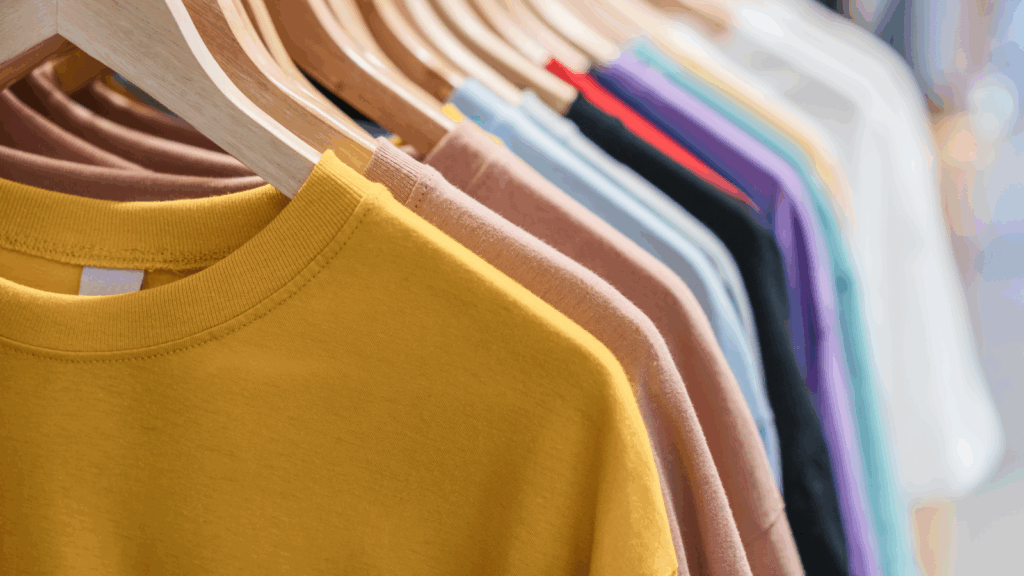
Blended fabrics combine two or more different fabrics. Often, this process creates semi-synthetic fibers that mix natural and synthetic materials – cotton and polyester, for example. Blending often improves the fabric’s performance, texture, and feel.
There’s no single best t-shirt fabric blend, so choose the one that suits your needs best.
The most common t-shirt blends are:
- Cotton/spandex. More stretchy and wrinkle-resistant than cotton alone.
- Rayon/polyester. Soft, breathable, and more durable than rayon on its own.
- Cotton/polyester or spandex. Stretchy, comfortable, and won’t wrinkle easily.
- Polyester/viscose. Strong, soft, and shrink-resistant.
Most common blend ratios
How many yarns are used in a blend depends on the fabric producer.
Here are some of the most common blend ratios:
- 80% polyester, 20% cotton. One of the best blends for athletic wear – soft, versatile, and easy to care for. It’ll hold up over many, many wash cycles.
- 52% cotton, 48% polyester. Good for casual wear. It’s durable yet lightweight, dries quickly, and is less prone to shrinking than pure cotton.
- 90% cotton, 10% polyester. Commonly used for t-shirts. It’s soft, comfortable, and breathable, but it can be prone to shrinkage.
- 75% polyester, 25% cotton. A durable and moisture-wicking fabric that’s popular for workwear.
- 65% polyester, 35% cotton. Retains the comfort and breathability of cotton, with added durability and quicker drying time.
- 50% cotton, 50% polyester. A balanced blend that’s soft, breathable, and less prone to shrinking or wrinkling than pure cotton.
Check out some of our best-selling t-shirt blends:
When it comes to tri-blend fabric, manufacturers combine polyester, cotton, and rayon. The final result is one of the softest t-shirt material options available, adding a light and silky drape.
Here are some of our customizable apparel made from tri-blends:
How to start a t-shirt business with Print on Demand
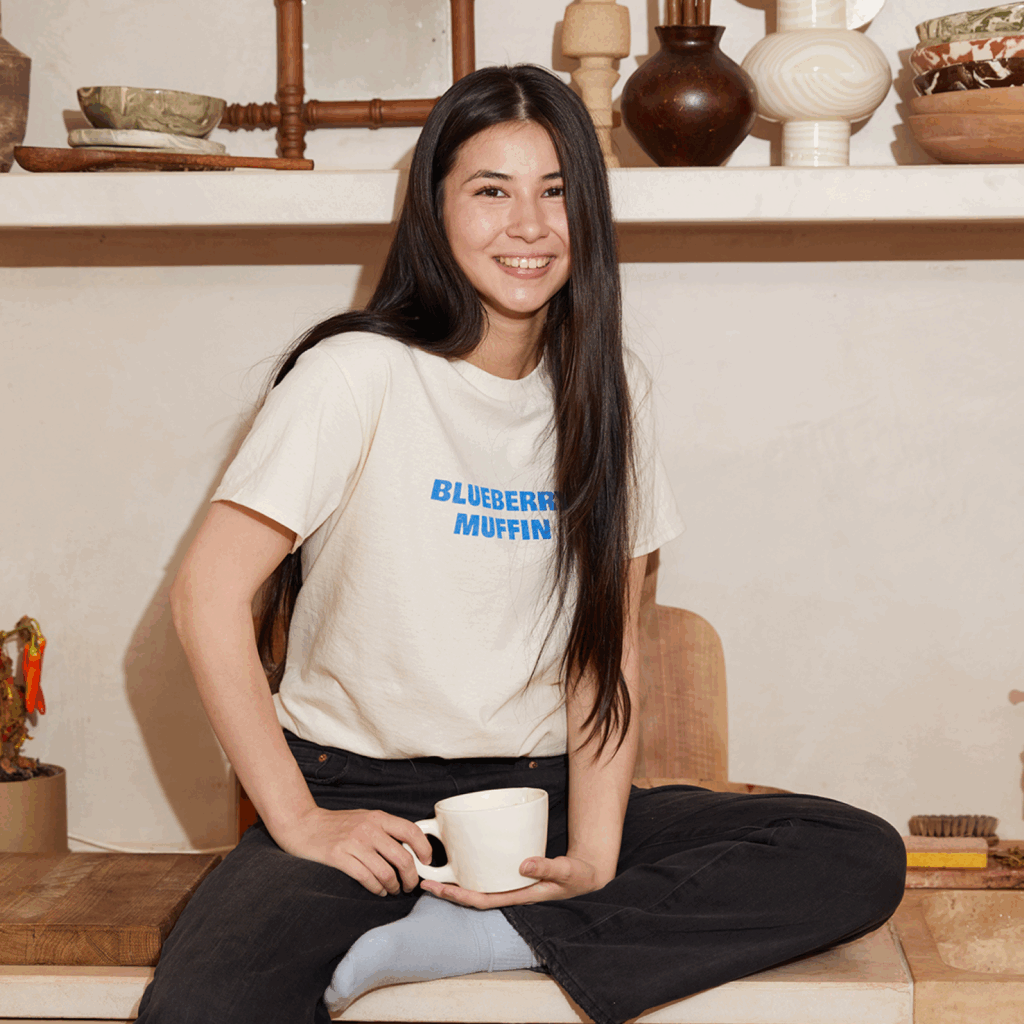
If you’re looking to start an online t-shirt business, Printify is here to make it easy. You design amazing custom shirts made from the best materials and list them in your online store. Once a customer orders, our Print Providers will print and ship the t-shirts right to their doorstep. There are no upfront costs or risk of unsold stock because each order is made on demand.
Sign up
Create your free account on Printify to access our beginner-friendly design tools and over 1,300 products, including t-shirts and other apparel made from higher-quality fabrics.
Pick a product
Browse our Catalog to find a t-shirt made from the right fabric for your customer base. Once you’ve chosen your shirt, click Start designing.
Design your t-shirt
Use the Product Creator to upload your designs or create something unique and new from scratch. Experiment with placement, colors, and AI-generated art, and our free graphics until your t-shirts look just right.
Connect your store
Easily integrate your Printify account with popular eCommerce platforms and marketplaces like Shopify, Etsy, Wix, and TikTok Shop for seamless product listing and order management. Keep track of everything in a single dashboard for maximum convenience.
Publish, market, and sell t-shirts online
Write your product titles and descriptions, click Publish, and start promoting your t-shirts across. Use social media, SEO, and online advertising to attract customers to your store and convert visits into sales.
FAQ
The right shirt material depends on the purpose:
- 100% cotton is a top choice for everyday wear due to its breathability, softness, and durability.
- Cotton blends are wrinkle-resistant and more stretchy.
- Linen is ideal for warmer climates because it’s lightweight and airy.
- Polyester and other moisture-wicking fabrics work well for athletic t-shirts.
- Three-ply fabrics, made by three yarns twisted into a single, stronger thread, are often used in premium dress shirts.
100% cotton is often considered one of the best shirt choices because of its natural breathability, softness, and comfort. It absorbs moisture and feels gentle on the skin, making it ideal for casual or dress shirts.
However, it wrinkles easily and may shrink in the wash. Cotton blends may be a better option for people who prefer low-maintenance clothing or need extra stretch.
The highest quality cottons for shirts are Egyptian, Pima, and combed ring-spun cotton.
Pima cotton is known for its softness, strength, and resistance to fading and wrinkling. The Egyptian variety is similarly luxurious, with its long fibers creating a smooth, durable fabric.
Combed ring-spun cotton also ranks high. It’s processed to remove impurities and tightly spun, producing a soft, smooth surface ideal for prints.
100% cotton is the most common higher-quality fabric thanks to its smooth, soft feel and long-lasting durability.
Sustainable fabrics, such as organic cotton or linen, also make excellent t-shirts because they’re gentle on sensitive skin, don’t cling to the body, and breathe. They’re especially popular for summer wear and eco-friendly clothing lines.
Cotton-polyester or cotton-polyester-rayon blends combine softness with stretch and durability, making them a top choice for high-end activewear.
For staying cool, lightweight fabrics like linen are among the best options. Linen is breathable, allowing maximum airflow in hot, humid weather. On the downside, it tends to wrinkle, so it’s rarely used as a t-shirt fabric.
Cotton is the preferred option for t-shirts because it’s soft, breathable, less likely to wrinkle than linen, and absorbs sweat well.
Moisture-wicking synthetics like polyester blends can also keep you cool and dry through a summer heatwave.
In conclusion
Choosing the best t-shirt material is one of the most important steps in creating standout custom merch. The feel, durability, and overall quality of the material can make or break how your shirts are received in the competitive apparel market.
Whether you’re designing for comfort, performance, sustainability, or style, matching the fabric to your customers’ needs is key to becoming their favorite online t-shirt store.
Printify has a massive range of customizable t-shirts in many fabric blends, from soft, lightweight cotton to premium tri-blends, all at the best prices in the industry.
Ready to turn your ideas into wearable designs? Sign up for Printify today and start creating unique, custom t-shirts to sell with confidence!



